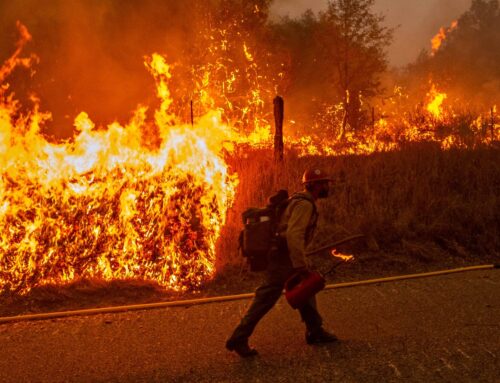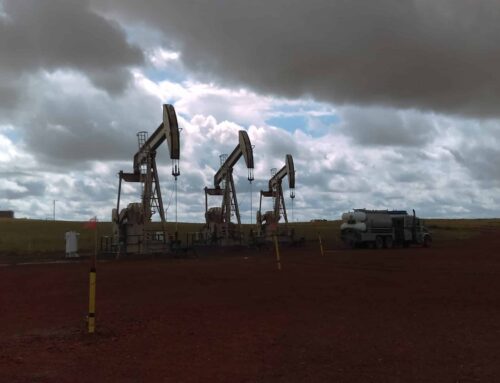Last Friday, President Biden traveled to Seattle to commemorate Earth Day. He also signed an Executive Order directive aimed at conserving forests, limiting wildfire risks, and reducing deforestation.
But before digging into his speech, let’s take a step back. The Administration’s overall climate goal is to reduce greenhouse gas (GHG) emissions by 50 percent by 2030. While we commend the Administration for tackling climate change, actually meeting this goal is another story. Congress can pass great laws, and the Administration can create new rules. But, if they’re not implemented properly – or loopholes or unintended consequences get in the way – both taxpayers and the climate lose.
As we wrote in last week’s Wastebasket, many counterproductive policies – such as certain energy tax breaks – are currently doing more harm than good for the climate. Congress and the Administration can do much more to right the climate ship.
Forward-looking, cost-effective climate solutions that build real resilience are the way to go. Smart investments in agricultural conservation and energy efficiency, for instance, can do wonders for the climate – while saving taxpayer dollars.
To be effective, climate solutions should adhere to the following principles:
- Prioritize wise climate investments,
- Get the price right,
- Promote accountability,
- Invest in resilience, mitigation, and adaptation, and
- Emphasize equity.
In his speech last week, President Biden mentioned policies ticking many of these boxes. Protecting old growth forests? Check. Using nature-based solutions like wetlands to protect against hurricanes and flooding? Makes sense. Capping and sealing abandoned mines? Yep. Making communities more resilient to wildfire risks? You get the idea. These are all investments that can reduce long term costs and liabilities.
Additional solutions for a better path forward include:
- Ag conservation: The President mentioned cover crops as a climate solution, a hot topic nowadays. We agree planting crops like rye and alfalfa can provide benefits for carbon sequestration and water and soil quality. Farmers who’d planted cover crops are patting themselves on the back right now with windy weather blowing soil across the Great Plains. However, to deliver even more benefits for the climate, environment, taxpayers, and farmers, cover crops mustn’t be the only Investing in existing farm conservation programs that promote numerous risk-reducing, profit-enhancing practices will deliver real, long-term resilience.
- Forest protection: On the surface, President Biden is right – reducing deforestation and conserving old growth forests are vital climate tools. But, the President failed to mention the harmful impacts of policies working at cross purposes with forest protection. For one, federal biofuels policies promoting the use of food crops for fuel is a bad idea. This increases crop prices and causes farmers in other countries to cut down trees to make way for more crops. Policies promoting “sustainable wood, paper, and other forest products” should also ensure failed subsidies don’t rise from the dead. Smart investments should instead be targeted at mitigating wildfire risks, for instance, saving money in the long-run.
- Pricing carbon/carbon tax: TCS has supported a carbon tax since our founding in 1995 under the rubric of you tax what you want less of, in this case a climate damaging GHG. We believe a carbon tax is one of the best ways to efficiently drive down emissions. Double win with a carbon tax is it has the potential to reduce those liabilities while raising much needed revenue for other priorities. In a December 2020 report, the staff of the nonpartisan Joint Committee on Taxation and Congressional Budget Office estimated that implementing a carbon tax of $25 per metric ton in 2021 that rises at an annual real rate of 5 percent would increase federal revenues by $1.0 trillion over 10 years.
- Eliminate methane waste: When companies drill for oil and gas, they often intentionally burn (flare) or release (vent) some natural gas – which is mostly methane –into the atmosphere. In this way, operators waste a substantial amount of taxpayer-owned methane every year on federal lands. The onset of fracking technologies led to a boom in U.S. oil and gas production. On federal lands, oil production tripled between 2010 and 2020. Gas waste through venting and flaring grew too, even though an estimated 40 percent could have been economically captured with available technologies, according to a 2011 report by the Government Accountability Office (Congress’ nonpartisan investigative arm). To date, the problem on federal lands is still not fixed (reforms were repealed and we’re back to 1979 rules). It’s imperative that the administration tackles this problem ASAP given that methane traps 80 times more heat than carbon dioxide over 20 years. We recently voiced our concerns to the Administration on this issue.
- National security: You can’t forget that massive consumer of fossil fuels, the Department of Defense, in this equation. Directing more budget resources to make the Pentagon contracting process more “green” has the ability to move markets. The Pentagon buys a lot of stuff – from paperclips to aircraft carriers. If all Pentagon contracts gave specific weight to contractors who exercise energy efficient practices, it would affect all government buying and, potentially, the products offered to the private sector.
There’s no shortage of common sense climate solutions. Enacting and implementing them though is where the rubber meets the road. Congress and the Administration have their work cut out, but real opportunities exist to save taxpayer dollars – and the climate.







Get Social